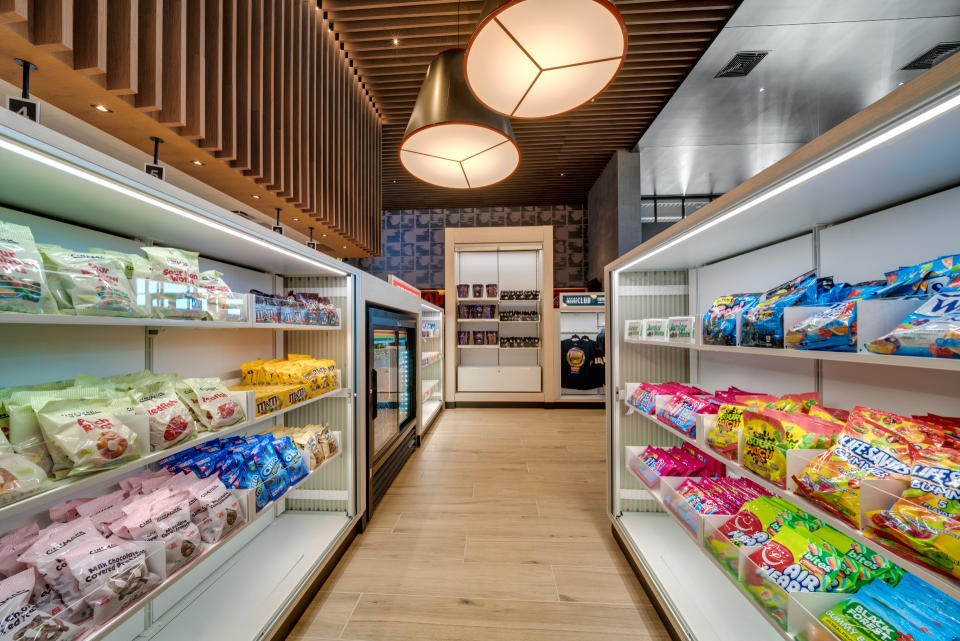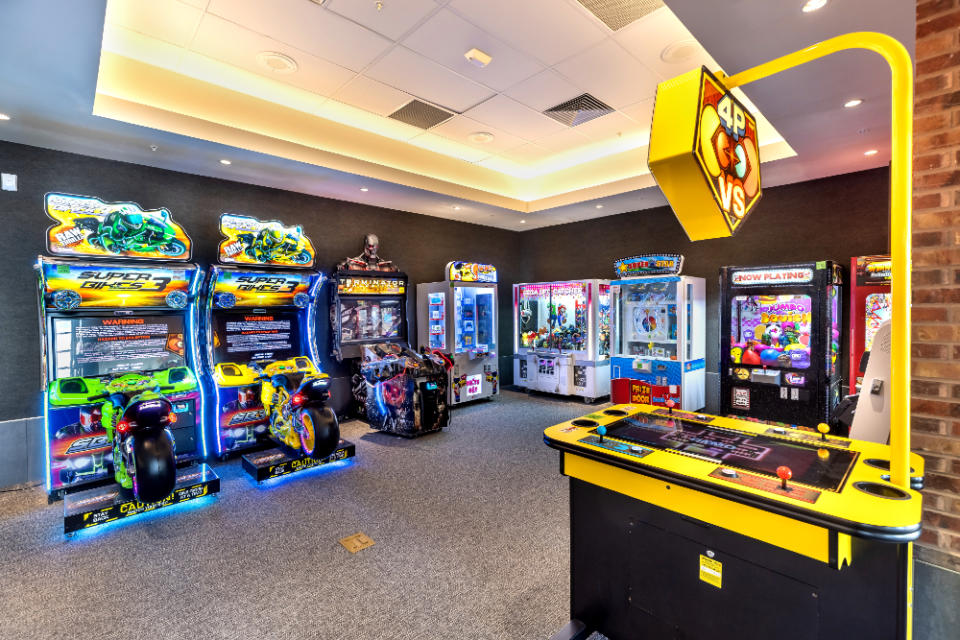After ‘Barbie,’ Where’s the Barbie Doll? Why Theaters Aren’t Selling More Movie Merch

Banksy documentary “Exit Through the Gift Shop” sounds like a great business strategy for movie theaters still emerging from the pandemic. Do the captive-audience math: “The Little Mermaid” + two kids under six > one father who would never hear the end of it.
However, it turns out that there are forces even greater than children begging for a Barbie doll in a gold disco jumpsuit (pictured above) for $50: among them, logistics and licensing.
More from IndieWire
Exhibitors are well aware of the need for brand and use-case extensions. During COVID, theater owners turned their expensive screens toward gaming and private screenings. Once movies returned so did, um, AMC-branded popcorn. It’s now available at your local Wal-Mart, but you know another highly trafficked retailer with shelf space and cash registers? Movie theaters.
IndieWire brought that question to major players: Why not sell movie merch in movie theaters? Genius, right? We thought so, too. However, the industry is divided.
Amid the post-pandemic recovery, lobbies are getting facelifts and updated merchandise flows. A Cinemark rep told IndieWire that most of its 317 U.S. locations have at least some movie-specific items for purchase.
AMC, the market leader with almost twice as many locations as Cinemark, is slow-playing the concept. It is, after all, harder to turn around an ocean liner than it is a Bayliner. While happy to push film-specific ways to enjoy your refreshments (ever want to eat popcorn out of Dom Toretto’s car?), AMC’s “collective concessions” have, to this point, generally been limited to snack-stand upsells. A wider range of officially licensed movie merch is available at AMC’s website.
“As a result of our success through in-theatre and online sales of AMC’s popular collectable concession vessels, we believe further opportunity exists in strategic in-theatre merchandise sales,” an AMC spokesperson told IndieWire. “While we are not yet ready to share our plans in this area, we are excited about continuing to offer AMC moviegoers unique and special items connected to their favorite new releases.”
Cinemark, which launched its own merchandise website last month, is more talkative on various in-lobby opportunities. Chief marketing and content officer Wanda Gierhart Fearing told IndieWire that she wants her theater lobbies to match the “experience economy” we currently share. “We’re an industry of creating memories,” she said.
And nothing punctuates an experiential memory like a souvenir. A proper gift shop, one complete with toys, hoodies, figurines, posters, and collectibles, sounds to us like a better use of space in 2023 than dusty arcade games. (Gierhart Fearing said those quarter-collecting cabinets “still work” from a revenue standpoint: “Otherwise we wouldn’t have them.”)
Cinemark has seen some success with what it calls its “Super Ticket” program. For $50, a Super Ticket got a Cinemark customer into a 3-D “Super Mario Bros. Movie” showing on their biggest screen, with a Mario t-shirt, hat, buttons, popcorn tub, and mini movie poster handed out at the theater. For “Spider-Man: Across the Spider-Verse,” a $45 Super Ticket included a showtime with popcorn and a redemption code that sent a branded mini-poster, t-shirt, and digital soundtrack directly to the customer’s home.
A Cinemark rep stressed for this story that the company’s primary objective remains maximizing attendance and box office. They’re happy to find ancillary revenue opportunities after that, is how the spokesperson put it.

There are lots of obstacles to a movie theater going any deeper into the merch game. First, you’d need additional staff — the kind trained in loss prevention. And while the redesigned Cinemark lobbies (pictured above) look beautiful and have some storage built into the new displays for inventory, it’s not nearly enough to go all Build-A-Bear.
And that’s not nearly the only logistical issue here. Gierhart Fearing, who has 30 years of retail experience ranging from selling furniture to dresses and travel accessories, said the challenge is, as she put it: “How do we think through a whole year of moviegoing?”
Still, no one bats 1.000 on supply-and-demand forecasts, and the shipping costs associated with returning unsold merchandise to the manufacturer can be enormous, said one exhibition executive who spoke with IndieWire on the condition of anonymity.
Any business model would rely on studio cooperation. According to one source familiar with the retail space, companies like Disney and others have launched pop-up shops or kiosks that offer movie-specific collectible items like a Funko Pop! toy. The source said these did “fine,” but such promos were just that — promotions — and always done on a small scale.
Also small is the theater’s piece of the overall pie: You buy the product from the theater, who buys it from the manufacturer, who licenses the I.P. from the studio, one person with knowledge of the economics told IndieWire.
Like the flow of films and box-office ticket sales, COVID killed the kiosks, though the concept of retail sales in movie theaters existed way before COVID.
The idea isn’t new: Nearly 50 years ago, a company called National Screen Service planned to sell buttons, posters, pins, t-shirts, masks, and even fake vampire teeth and photon toy guns ahead of movies like “Superman,” “Dracula,” “Star Trek,” and “The Lord of the Rings.”
“Why sell ‘Superman’ shirts at Sears or (JC) Penney’s?” a National Screen Service executive said to the New York Times back in 1978. “Why not turn the theater into a store since the people who want to buy the merchandise are the people who see the film?”
Where that company failed, so did others. Landmark and the now-defunct Arclight also tried gift shops where they sold DVDs, t-shirts, books, and other gewgaws before the shops shrank to almost nothing. Some still exist in select markets: Alamo Drafthouses sell DVDs (the chain’s owner also owns a DVD company) and other vintage movie items, and they are offering a pink Barbie lunchbox and Thermos with the purchase of a “Barbie” movie ticket.
“Retail does not sell in movie theaters,” the exhibition executive said, adding that it hasn’t worked whether you’re in Los Angeles or in St. Louis. “We have tried everything.”

There may be a way for exhibitors to grow their retail-sales revenues via e-commerce even beyond their own websites.
Movie-screen advertising companies NCM and Screenvision, which program those ads ahead of a feature presentation’s trailers, are toying with the concept of a “shoppable screen.” Soon, on-screen advertisements may feature a scannable QR code where one can buy a movie-related product and have it shipped directly to the house. NCM chief revenue officer Mike Rosen told IndieWire it’s an “untapped” opportunity that could conceivably mature to a delivery system that allowed for the pickup of certain items at the concession stand.
The CEO of Rosen’s chief competitor, John Partilla of Screenvision, is hot on NCM’s heels with a similar plan. “You’ll see more” of those on-screen codes leading directly to making an online purchase, he said. Even though Screenvision and NCM would not get a piece of any in-lobby retail — unless it was its proprietary technology that made the point-of-purchase possible — Partilla thinks it’s a good idea.
“You would think that when there’s the big Q4 movies like ‘Star Wars’ and things like that, they should have merch out there,” Partilla said. “But we haven’t convinced movie theaters to do it yet. We have looked at partnering with companies like (online retailer) Fanatics… but we’re not there yet.”
And not getting a taste is “OK,” Partilla said. “We always root for the movie theaters. Anything that helps them increase their revenues is a good thing in the game.”
Best of IndieWire
Sign up for Indiewire's Newsletter. For the latest news, follow us on Facebook, Twitter, and Instagram.

